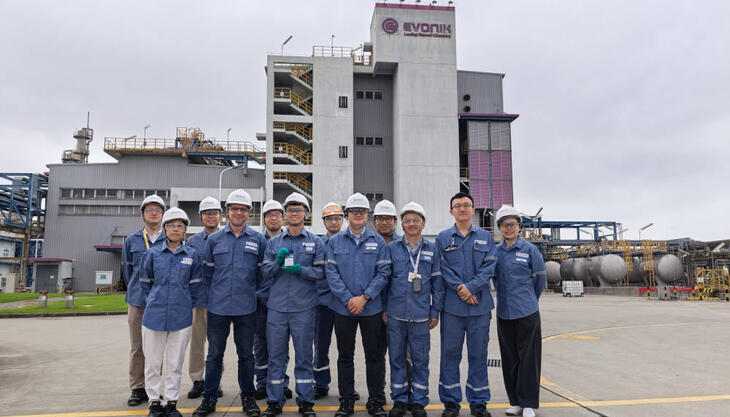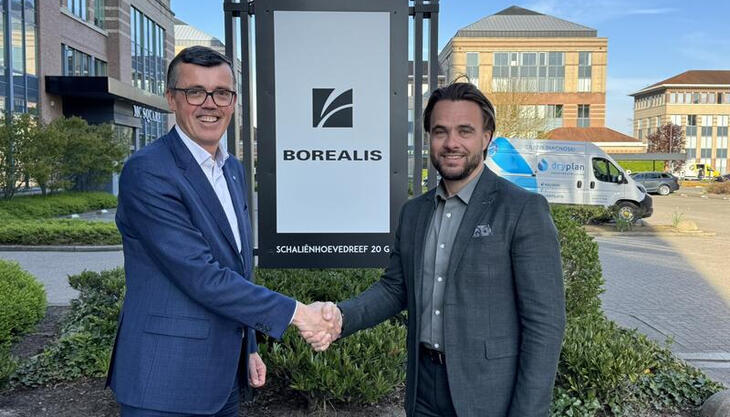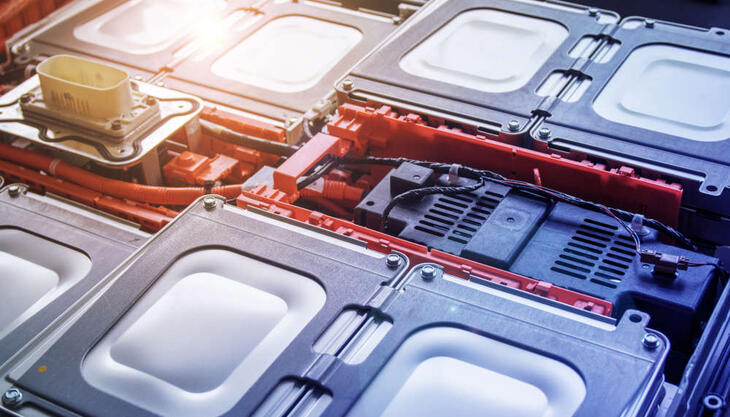The event that for 16 years has brought the global PET industry in Italy
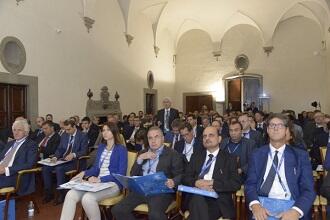
This year, the PET Day, the definitive PET event that usually marks this period of the year, was a tad more special: as usual organized by GSI, Italy, in Artimino, on the Tuscan hills close to Florence, it was not only its 16th edition, but had a particularly festive atmosphere as it also celebrated the 25th anniversary of the company founded by Francesco Zanchi. PET Day 2018 took place on October 4 and started with the usual high quality level of lecturers and the privileged attendees.
Qualified lecturers
The first speaker of the morning session was Massimo Jakelich, chief Investment Strategist of Azimut Wealth Management (Italy). The view was mainly on the international economic momentum, in order to try to anticipate the future macroeconomic trends. The “soft landing” of China, the good and positive situation in the US, with consumption growing and unemployment at its lowest, and the “cooling” of EU zone were evaluated to understand what economic environment we should expect for 2019. The conclusion was that while no recession is expected in USA or EU, we should see a 2019, moving onwards, with situations of high volatility in all financial investments. Therefore, this pattern should also affect raw materials rates.
Then Donghua Zhao, general manager of Zejiang Hengyi Petrochemical (China), a huge group active in oil as well as PX and other polymers and raw materials, and also the world’s largest manufacturer of PTA and PET, took the podium. He indicated that China will still lead 2019 expansion in Asia. New capacities of PX will be staring in 2019 while some of PTA are expected specially in 2020. MEG will see new growth in availability thanks to more shale gas availability in the US. However, the fast growing demand in polyester, in China in particular, may cause some new issues in PTA in 2020. Finally, there is already a trend towards more company integration in PX and also PTA, in China, and this oligopoly will be putting on the table different questions in future for all market players.
Hemant Sharma, sector head of Reliance (India), followed with a highly interesting lecture on the impact of the fibres demand and consumption on the PET industry. The request of all fibres is increasing all over the world, and particularly in developing areas, mainly in Asia. Polyester fibre and filament will enjoy, between today and 2023, the largest rate of increase. Textile polyester will definitely affect raw materials prices as its demand will be growing even faster. However, we will see more saturation in fibre capacity operating rates while filament sector will be leading the way to further highs as its share will be getting bigger. That means that, even though additional amount of raw materials like PTA and MEG will be available in the market, thanks to capacity additions, the margins for their manufacturers will remain at healthy levels. Finally a particular light was put on Reliance Industry that is moving on with consistent innovation of its products, showing that being inside a mature industry does not mean putting aside imaginative developments and new applications.
Marcus Gustafsson, Van Bael & Bellis (Belgium), offered interesting fresh overview on EU trade defence measures and their current situation. Particularly important was the announcement that the duties on Reliance and Dhunseri PET resins was to be officially reduced, following a review of the level of the countervailing duty on PET exports. Gustafsson indicated that there are Countries now potentially implicated in new EU investigations, in the same market sector, such as China and South Korea. Following that, it was actually enhanced how the EU trade legislation is going into a modernization reform, trying to be more effective in reducing the length of its investigations. Finally, some important remarks were made on possibility of a hard Brexit, which may cause serious trade disruption between EU and the UK.
Then Zanchi took the podium again to talk on what the expectations for 2019 may be and what could be a winning purchasing strategy under the existing scenario. Reviewing 2018, we could see that all prices were much higher than what everybody forecast. The main cause was the lack of raw materials, as the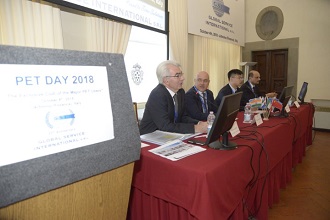 overcapacity we were basking on back in 2017 was completely disappeared due to the reduced world output (forced closures, accidents). As far as PTA is concerned situation should be improving as new capacity and restart of idle plants will come on stream, so offer and demand will be more balanced. There are expectations also of higher overcapacity of PET in China (new plants to start). In the EU, even though JBF Belgium will be likely to go on producing, import of PET will likely increase. However a thing which can be predicted is that volatility will not cease as new anti-dumping and anti-subsidy measures will change, again, the trade flows: so the question Zanchi posed was on how to avoid the risks related to volatility in prices and exchange rates too. The answer is coming from China, and the announcement was of clear relevance for all the main market players in PET: from 2019 it will be possible to operate in the PTA future market in China, with the opportunity to edge any purchased quantity of materials implying PTA price, so completely overcoming the risks related to material rates volatility. The possibility for foreign investors to do so will be made official in few days. The definite future policy for PET buyers is therefore to allow themselves to buy long term safely operating within the Zhengzhou Commodity Exchange PTA futures. The dream of a fixed level of raw materials purchase is coming true, available to all.
overcapacity we were basking on back in 2017 was completely disappeared due to the reduced world output (forced closures, accidents). As far as PTA is concerned situation should be improving as new capacity and restart of idle plants will come on stream, so offer and demand will be more balanced. There are expectations also of higher overcapacity of PET in China (new plants to start). In the EU, even though JBF Belgium will be likely to go on producing, import of PET will likely increase. However a thing which can be predicted is that volatility will not cease as new anti-dumping and anti-subsidy measures will change, again, the trade flows: so the question Zanchi posed was on how to avoid the risks related to volatility in prices and exchange rates too. The answer is coming from China, and the announcement was of clear relevance for all the main market players in PET: from 2019 it will be possible to operate in the PTA future market in China, with the opportunity to edge any purchased quantity of materials implying PTA price, so completely overcoming the risks related to material rates volatility. The possibility for foreign investors to do so will be made official in few days. The definite future policy for PET buyers is therefore to allow themselves to buy long term safely operating within the Zhengzhou Commodity Exchange PTA futures. The dream of a fixed level of raw materials purchase is coming true, available to all.
Before lunchtime, Chiara Zanchi, president of Saint Lawrence Foundation, gave an update on the big developments that the foundation, created by the Zanchi family exactly 10 years ago, is actively bringing to the communities of Makeni in Sierra Leone, one of the poorest countries in Africa. After Saint Lawrence supported the creation of a new faculty of Agriculture at the local university, a new step was, recently, the creation of SBD Company. SBD looks after the developments of a poultry and egg production and distribution business in the area and is fast moving forward: the first results were shown on PET Day with a moving video. After having prepared fields for cultivating the feed for the hens (now 10,500) and having built sheds for them, the first egg was laid last August. The target is to create a sustainable business managed by competent professionals coming from the same Makeni University’s Faculty of Agriculture, with the goal to offer safe food to the local community.
At the beginning of the afternoon session of PET Day, Anna Horeicica-Csiki from Sipa (Italy) introduced a new production system for PET preforms, starting directly from flakes. This was developed thanks to a cooperation with Erema, and aims to offer an easy and energy-saving process employing rPET to eventually produce virgin-like quality preforms. The full line, being sustainable and direct, is bringing high savings in the use of energy and time.
Finally, the latest important lecture came from Renato Zelcher, EuPC (European Plastics Converters) president and CEO of Crocco (Italy). In detail, the very actual challenges of the plastic industry regarding the image of plastic, in this moment, were considered. It is necessary to take responsibility, and also action, towards the need to educate people properly on the use of plastic and its recycling. A big effort is needed, working closer with recyclers and municipalities, in order to implement, for real, a circular economy in this field. We are going towards a 50% plastics waste recycling, and the aim is to reach 70% in 2040, in Europe. However to truly develop a circular plastics industry the support of the EU authorities is necessary. On a final note, Zelcher indicated as PET is the largest recycled material in the EU.
The final round table
The PET Day event is usually arriving at its final hour, by bringing around a round table talk some of the most preminent entrepreneurs, experts and top managers of the PET business. This time a newcomer was Coca-Cola, with its managing director of Plastics Packaging Bruce Elliott, who underlined as the beverage company is addressing itself more and more toward increasing recycling sensibility among its worldwide consumers. Being the theme of the discussion “The Circular Economy of Plastic”, this was a well-heard message.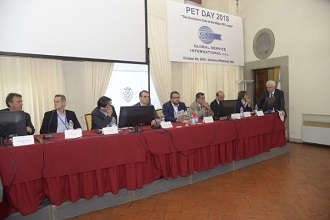 Carla Silva (Lactalis) and Carlo Pontecorvo (Ferrarelle) explained how their companies are in strong support of recycling and what they propose to recall consumers that PET is 100% recyclable. Hijiko Kosaka (Toyota Tsusho) described which are the actions and investments done in Japan, where 60% of all plastics are recycled. Christian Mayr (Alpla) pushed the converters to do more in promoting recycling, while Aleksandr Levchenko (Retal), underlined the tough job still to be done in Ukraine, where there is no legislation nor a collection system, but Retal is making its own effort educating its people and the local community. Dirk De Cuyper (Resilux) proposed to avoid connecting with politics for these actions, and invited companies involved in the use of PET to be more proactive, possibly joining forces (for example with Coca-Cola). Hemant Sharma (Reliance) described the situation in India: Reliance is really taking direct action with beverage distributors and consumers to promote recycling and avoid littering, which is a real dramatic issue, in India and whole South Asia.
Carla Silva (Lactalis) and Carlo Pontecorvo (Ferrarelle) explained how their companies are in strong support of recycling and what they propose to recall consumers that PET is 100% recyclable. Hijiko Kosaka (Toyota Tsusho) described which are the actions and investments done in Japan, where 60% of all plastics are recycled. Christian Mayr (Alpla) pushed the converters to do more in promoting recycling, while Aleksandr Levchenko (Retal), underlined the tough job still to be done in Ukraine, where there is no legislation nor a collection system, but Retal is making its own effort educating its people and the local community. Dirk De Cuyper (Resilux) proposed to avoid connecting with politics for these actions, and invited companies involved in the use of PET to be more proactive, possibly joining forces (for example with Coca-Cola). Hemant Sharma (Reliance) described the situation in India: Reliance is really taking direct action with beverage distributors and consumers to promote recycling and avoid littering, which is a real dramatic issue, in India and whole South Asia.
Finally, Zanchi wrapped up the lively discussion by stating that without a common strategy it is difficult to aim at promoting collection and educate people. School education is necessary, too. But, after all, what is lacking mostly is a strategic and clear communication from the PET industry, as a whole. As a single block it must drive the communication, not be driven by it. The problem is eventually not the plastic, but the wrong way people dispose of it.
When addressing his salutes to the audience, Zanchi hinted that next year, communication could be one of the main topics for PET Day number 17. There is only to wait the next event in the beautiful Villa Medici of Artimino, where once a year the future evolution of PET world is discussed among its top leaders.
















